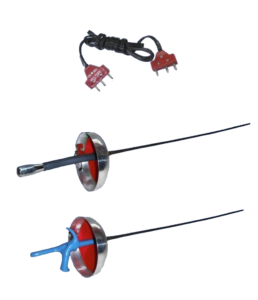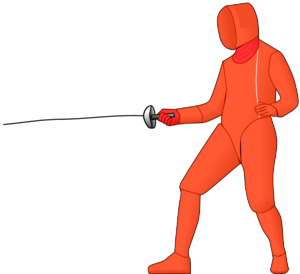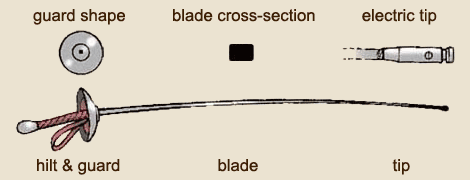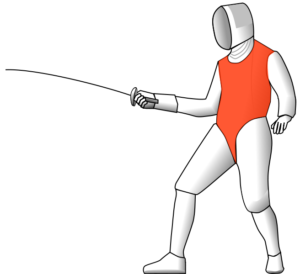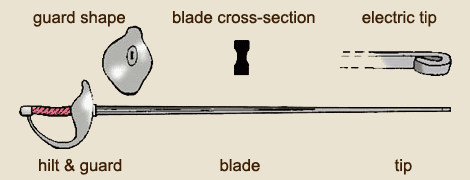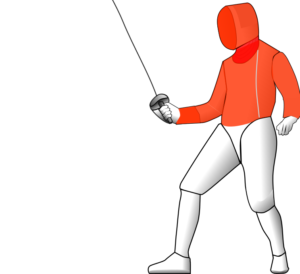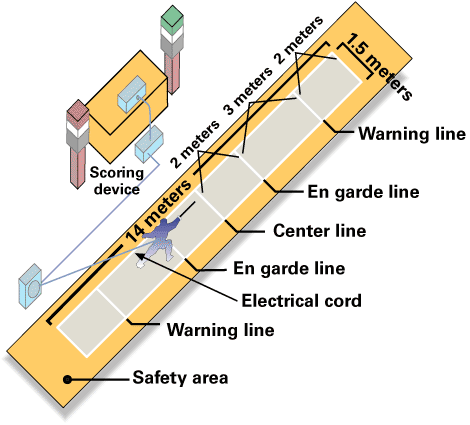The word fencing is actually derived from the Middle English shortening (15c) of the word defence meaning the act of protecting and expanded to mean the art or practice of using a sword. In most general terms the word fencing in reference to sport means Olympic or modern fencing such as an epee, foil or sabre.
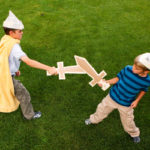 Fencing itself is not something that really is that foreign from most individuals. From an early age media exposes us to the romance, passion and excitement of sword fighting. From the three musketeers to star wars the hero most often has a sword.
Fencing itself is not something that really is that foreign from most individuals. From an early age media exposes us to the romance, passion and excitement of sword fighting. From the three musketeers to star wars the hero most often has a sword.
Modern Olympic fencing is divided into three disciplines named after the swords used, epee, foil and sabre. Each discipline not only varies in the sword used but the target and means of scoring the point.
Épée
The word épée is actually french for sword. It is the heaviest of the three weapons of fencing, featuring a 90cm long triangular shaped blade and a large cupped guard. The shape and design most resembles the early rapier designs. Hits are scored only with the very point of the weapon through thrusting.
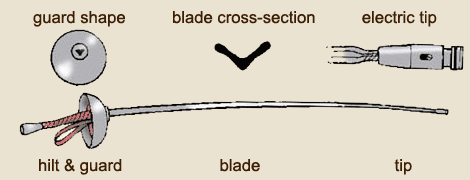
The weapon can have a traditional (French) style grip or an orthopedic grip.
The tip of the epee has an electronic button which triggers when 750g of force is applied to the target.
The target area of epee is essentially the same as combat with a sharp sword, with the entire body from head to toe being valid target. Merely touching the electronic point to the target with sufficient force will score a touch.
Foil
Foil is actually the oldest of the three fencing weapons. The weapon is modeled after the aristocratic small sword that was popular during the 17th century. It features a thin, light 90cm long blade and small circular guard. Like the epee the hits are scored only with the point through thrusting. Like the epee the foil also has an electronic point which registers a hit when 500g of force is applied.
The target of foil is restricted to the torso of the body. This was originally established from its roots as defensive martial art whereby you practiced hitting the most effective areas. Hits on the target area count towards a point, hits off target stop the action however do not count for points. Foil fencers wear a special electrically conductive vest which aids the electronic scoring system in determining valid vs non-valid hits.
Sabre
Sabre is a decedent of the military sabre used primarily by cavalry officers. It is the lightest and smallest of the three weapons but arguably the fastest in its fencing style. Points are scored through thrusting or cutting.
The target area for sabre is reflective of its cavalry roots. Hits can be scored anywhere on the body above the waist. Unlike the foil and epee there is no electronic button, the blade of the weapon is electrified and merely touching the blade in any fashion to the opponent’s target will set off a hit. Sabre fencers wear an electrically conductive jacket to allow the scoring system to determine a hit. Unlike foil, there are no off target hits. However like foil the rules of right of way or priority determine who has the right to score.
Field of Play
In the fencing the field of play is called a piste or strip. The bounds are 14 m x 1.5m. Combatants start 4m apart and can only fence in the direction they start. Combatants are restricted from leaving the field of play, stepping off the lateral boundaries results in a loss of distance to the offender. Stepping off the end of the piste results in a point scored for the opponent.

